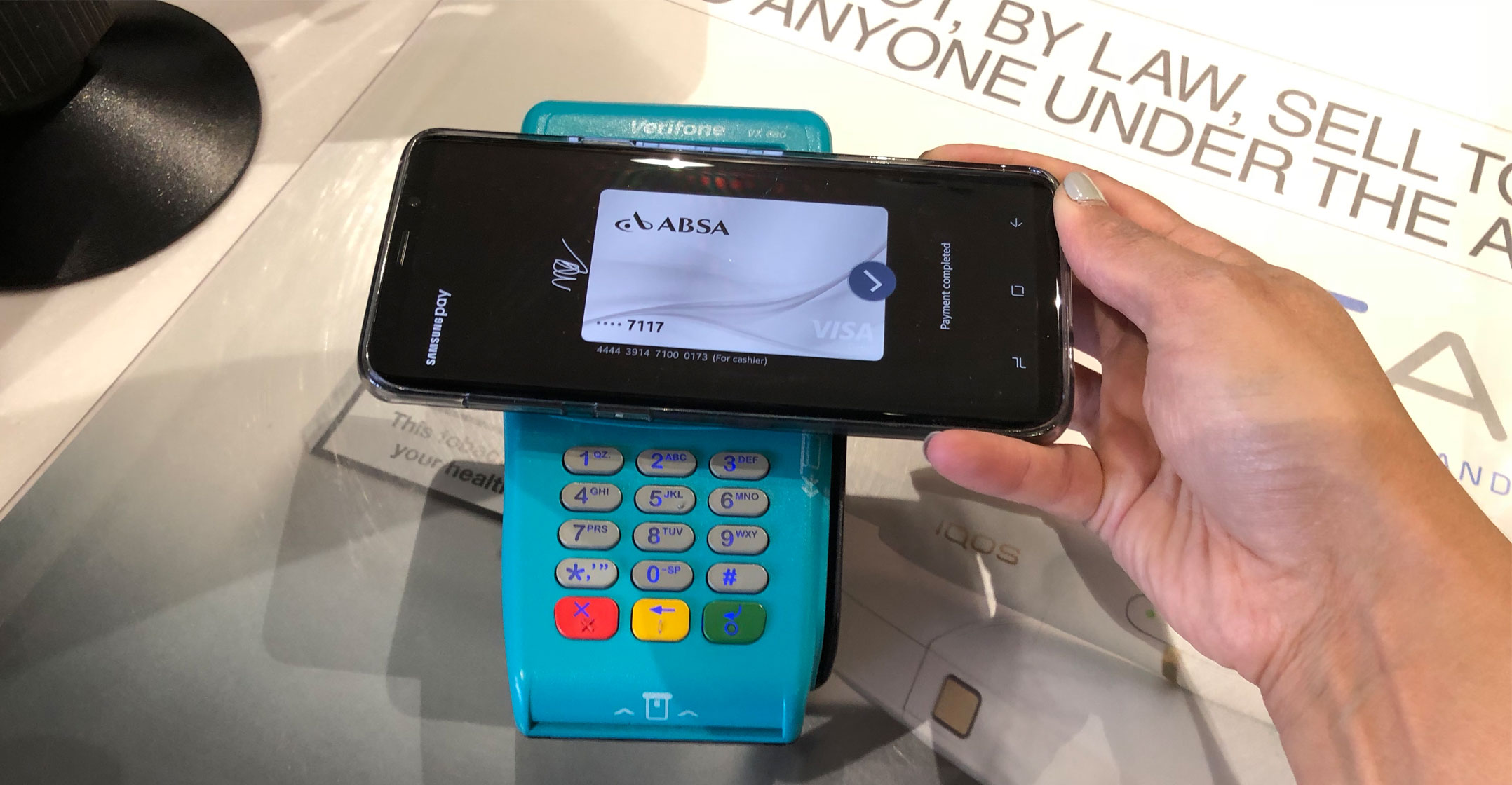
Samsung Pay went live in South Africa on Tuesday in beta form, with Absa clients getting exclusive access and Standard Bank to follow “soon”.
After waiting for over 24 hours for a newly opened Absa account to get approved on the lowest tier — its R4.99/month transactional account — I loaded the Visa debit card onto Samsung Pay.
Supported cards can be added manually, or through the smartphone’s camera by placing the card in front of it. The card then needs to be verified via a one-time Pin, or by phoning the Absa call centre, before it can be used to make payments.
Once loaded, Samsung Pay becomes accessible from the Android lock screen by swiping from the bottom up, meaning it can be opened immediately through one-touch access.
The application then pops up, but can only be used once you have authenticated yourself, either via facial unlocking, iris scan, fingerprint or Pin (you select your preferred option at setup).
I opted for iris scanning, with Pin entry as a secondary option. The placement on the lock screen means one can accidentally open Samsung Pay when attempting to unlock the device for regular use — it happened to me a couple of times.
When used for the first time at a supported contactless payment terminal such as at Pick n Pay or Spar retailers, or at a petrol station, Samsung Pay requires the Pin of the debit card loaded, no matter how small the payment. Subsequent payments do not require a Pin and work seamlessly for nominal payments. Making my first contactless payment took me just two seconds.
Making a payment on the Galaxy S9+ felt effortless. It certainly beat taking out my wallet and fumbling with it afterwards. Samsung Pay, or any form of contactless payment for that matter, feels futuristic. This is the way forward in physical payments. I’m tempted to keep my grocery shopping under R200 or so to make visits to the supermarket completely seamless. The idea of inserting my card in a terminal now feels dated. I’m actively using as many mobile payment wallets available in South Africa, including those from Zapper, SnapScan and Starbucks.
Samsung South Africa claims a 97% terminal acceptance rate, based on its closed beta trials.
Magstripe secure transmission
According to Mastercard South Africa, Samsung Pay works just about anywhere you can tap or swipe your card, but I couldn’t get it to work at my local Woolworths.
“Where contactless payments have not been activated, Samsung Pay’s MST (magstripe secure transmission) technology will enable a secure contactless magstripe payment,” said Gabriel Swanepoel, vice-president of product development and innovation, at Mastercard South Africa. “For high-value payments or limits controlled by issuers, consumers may be requested to enter their bank card Pin on the point-of-sale device.”
Swanepoel described it is a “secure and trusted platform”, with Samsung Pay making use of Mastercard’s tokenisation service — the process of replacing a primary account number with a unique payment token (alternative card number). “Each transaction uses a random token instead of your card number, which means your actual information isn’t shared when you shop and your details stay safe. Even though these transactions are conducted as contactless payments, all transactions contain unique data and a cryptrogram, and always get authorised by your bank.”
The Samsung Pay app is available in the South African Google Play store, provided you have a supported device such as the Galaxy Note8, Galaxy S7 or higher, or Galaxy A8. The Galaxy A5 and A7 will be supported from the end of August. — (c) 2018 NewsCentral Media




